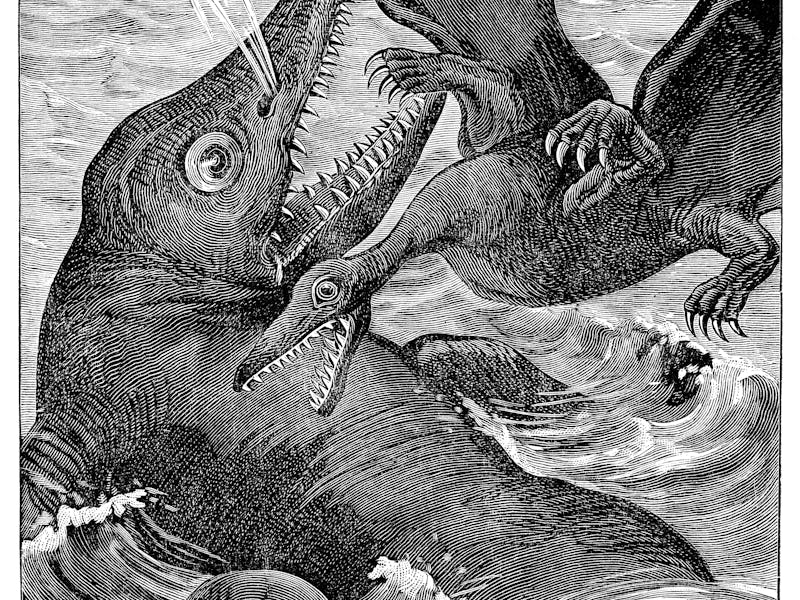Inside the lives (and bellies) of ancient predators
In this episode, we discuss how a mummified puppy and fish reptile managed to turn science on its head.

Some of the strangest discoveries from ancient history are being found in the most surprising places.
As if finding a mummified dog or ancient aquatic megapredator wasn’t groundbreaking enough, scientists went on to discover what was inside their stomachs. And then things really got weird.
The last meals of ancient critters are offering startling new clues about what life was like millions of years ago. We’ve learned that when dinosaurs roamed the earth, ancient sea monsters wreaked more havoc in the ocean than we thought possible. And fyi, a solid go-to snack for puppies during the Ice Age? Woolly rhinoceroses. (Obviously.)
The surprise contents found in ancient bellies from the past are finally giving some creatures the credit they deserve. And forcing science to rethink predation all together, slowly rewriting history — literally from the inside out.
In this episode of The Abstract, we discuss how a mummified puppy and fish reptile managed to turn science on its head.
Our first story is about how a rare new discovery of an ancient, mummified puppy is offering surprising new clues to what the Ice Age was really like. Made possible by permafrost, scientists hope the finding can lead to new ideas about ancient dog populations and evolutionary history at large.
Our second story is about how researchers found the skeleton of a 13-foot-long lizard — inside the stomach of an ancient sea monster. Known as Ichthyosaurs, these ancient reptiles turned out to be way more metal than scientists realized — and are now redefining how we look at megapredation.
Read the original Inverse stories:
- Scientist found a mysterious last meal inside the belly of a mummified puppy
- Ancient aquatic megapredator was way more metal than scientists realized
Where to find us:
- Subscribe to The Abstract wherever you listen to podcasts: iTunes | Spotify | TuneIn | RadioPublic | Stitcher
- Follow Nina Pullano on Twitter
- Follow Inverse on Twitter
- We're hosted and produced by Tanya Bustos
—
Right now, facts and science matter more than ever. That's part of the reason for The Abstract, this all-new podcast from the Inverse staff that focuses exclusively on science and innovation. Three new episodes are released a week, and each covers one theme via two related stories. Each features audio of original Inverse reporting, where the facts and context take center stage. It's hosted by the Tanya Bustos of WSJ Podcasts. Because we're Inverse, it's all true but slightly off-kilter. It's made for people who want to know the whole story. —Nick Lucchesi, executive editor, Inverse
This article was originally published on